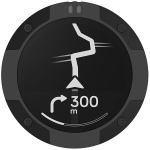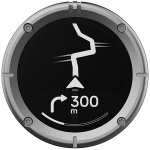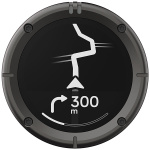If you want route guidance on your bike that’s simple to plan, display and follow then the Beeline Moto II could be the perfect device for you.
It’s a small (1.5in) TFT display that shows you a simplified version of the road ahead, the direction of your next turn and how far away that turn is.
It draws this information from your smartphone, where you will already have planned your journey through the Beeline Moto app.
Keep the Beeline and your phone connected by Bluetooth, put your phone in your pocket and the Beeline screen will do the rest.
Having used one for a month ahead of its launch, covering around 500 miles, I think it’s a great device that works well for simpler journeys.
The Moto II is easier to follow than the first-generation device, thanks to a larger usable screen area, extra protections against glare and also the diagram showing the road ahead.
I found it very easy to follow the directions, and there are flashing LEDs and audible beeps to draw extra attention to imminent turns.
If you want accompanying voice instructions to come through your helmet intercom, they’re available by upgrading the free phone app to Beeline Plus, which costs £3.99 a month at the time of review.
The standard app is flexible for route planning, allowing you to choose from a ‘fast’ route Beeline thinks will take the least time and a ‘fun’ route it thinks will be more engaging to ride.
That last feature is hit and miss, as I find it to be on most sat-navs, as they all struggle to know how any particular rider defines a fun route.
I prefer to tweak the route manually in the app by adding waypoints that force it to take my choice of detour.
Additionally, if you subscribe to the Beeline Plus app you can plan a round trip and select how far you’d like to ride. So if you fancy a 50-mile rideout on a Sunday morning, Beeline will guide you on one. Again, its idea of a fun route may well be different to yours.
Beeline shows more than just route instructions, with different displays that can be accessed via rocking the unit’s outer ring to operate a switch.
It has displays for your current speed, your ETA, a compass and your riding time, then there’s a display to show you the remaining battery percentage of both the Beeline, and also your phone’s remaining charge.
Battery life is good. Beeline claim 10 hours and my experience backs up those claims. I rode for seven and a half hours from a full charge and had 23% remaining on the Beeline’s battery.
It charges up through a USB-C port and can be charged while you ride if you’re able to route a charging cable to your bike’s battery, or safely stow a powerbank nearby.
The unit itself is waterproof and I rode in heavy rain without any trouble from the unit.
Beeline Moto II comes with the simplest form of mounting. You get a bracket with four hooks for O-rings, which are also supplied. Push the rings into two hooks, wrap them around a bar or rail on the bike and connect them into the free hooks on the bracket. Now insert the Beeline device into the bracket and twist to lock it in place. Easy.
If you don’t have a suitable bar or rail then a range of Beeline accessories give different methods of attaching the unit to your bike, including a powered mount that charges the battery as you ride.
Many riders will prefer to find a way of attaching their phone directly to the bike and following the on-screen directions.
That’s a perfectly legitimate way to do it, with loads of phone mounting options and cases from Quad Lock, Interphone, Ultimate Add-ons, Oxford and others.
But there are reasons why you might not want that.
Some riders consider their phone to be vulnerable to theft, water ingress or damage from vibrations coming from the bike. Others may think a modern phone looks out of place on their bike.
This gets around all of those considerations, and the smartphone battery will last longer because its screen is not illuminated.
There are extra features on the Beeline Moto II, which push it up a level to try and bridge the gap to fully featured sat-navs from the likes of Tom Tom and Garmin, or to rival phone-based nav apps like Waze.
You can switch on speed limit guidance so it tells you the speed limit in a small icon, with a red border appearing around the outside if you exceed that limit.
I found the speed limits to be inaccurate on several occasions, though hopefully Beeline’s data on that will improve with time and make that feature more accurate.
You can also import GPX files, allowing detailed route planning on a desktop computer to be exported to the Beeline app and then displayed through the device.
This gives full control over the route you take, and I found it worked well as long as I was able to stay on the planned route.
If I deviated from the route then the Beeline screen went blank. The only way to get back to it was to stop, look up the route on the Beeline phone app and try to find my way back before continuing on the path exported to the device.
More sophisticated sat-navs offer the option to navigate back to the route, giving you the choice to go to the starting point or the point that’s nearest your current location. Hopefully Beeline can add this functionality in a future firmware update.
The beauty of tech products (and the potential hassle for reviewers like me!) is that they can be updated over time and grumbles like the ones you're reading here can be addressed.
When I took on the Beeline for review, however, I didn’t expect it to help me follow detailed routes I’d pre-planned on a computer. Nor did I think it would give me a speed limit display that tried to keep my licence clean.
All I expected was a device that would know where I want to go and could show me the way to get there without getting lost.
For that, I find the Beeline Moto II to be an excellent device that does exactly what I think it should. If Beeline can make those advanced features work better in future then that will just be a bonus.

Beeline Moto II - Black

Beeline Moto II Metal - Silver










